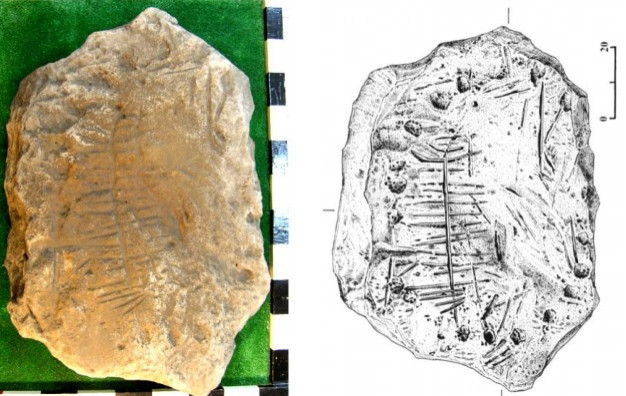Ancient Sundial Discovered In Bronze Age Ukrainian Grave Is Oldest Of Its Kind [PHOTOS]

Before there were wristwatches and cell phones, people etched lines and ovals into stone to tell time. Sundials use the position of the Sun and Earth’s latitude to mark the hours of the day. One of these ancient tickers, possibly the oldest of its kind, was recently discovered in Ukraine.
Archaeologists from the Donetsk Museum of Regional Studies found the carved sundial in 2011 while excavating a 3,200- to 3,300-year-old Bronze Age grave between the Ural Mountains and Ukraine’s Dnieper River. The grave they were exhuming belonged to the Srubnaya, or Srubna, people, a Late Bronze Age culture known for the timber-framed graves they peppered throughout the flat grasslands of the Ukraine. Researchers believe the man buried there may have been sacrificed or possibly marked as a messenger to the gods or ancestors, according to NBC News.
Live Science reports that in February of this year, the researchers sent photos of the stone to Larisa Vodolazhskaya at the Southern Federal University in Russia to make sense of its carvings.
According to Vodolazhskaya’s analysis, published in the open archive of scientific papers arXiv, the ancient sundial from Ukraine was an analemmatic sundial which, unlike traditional sundials, doesn’t have a fixed vertical that casts a shadow. Instead, an analemmatic sundial’s vertical, called a gnomon, must be moved every day of the year as the sun’s position in the sky changes.
The Bronze Age sundial discovered in the Ukraine had lines and circular markings on both sides. An elliptical pattern of circular depressions and a series of perpendicular lines were etched into one side. The circular wells mark the hours in the day in half-hour increments.
The ancient sundial reveals that the ancient steppe-dwellers were no dummies. Vodolazhskaya was able to confirm the sundial’s accuracy by calculating the angles of the shadows created by the sun at that latitude, confirming that the Srubna had a cultivated understanding of geometry.
"They are made for the geographic latitude at which the sundials were found," she confirmed.
Finding an ancient sundial with half-hour marks is very rare, but not unheard of. Earlier this year, scientists picked up an ancient Egyptian sundial at the Valley of the Kings, the burial ground of Egypt’s New Kingdom period rulers. The 3,000- to 4,000-year-old sundial was discovered on the floor of a workman’s hut, and was made of a flattened piece of limestone. It had black semicircles divided into 12 sections drawn on top, and an indentation in the center where a metal or wooden gnomon would have been placed. Researchers believe it may have been used to keep track of the workmen’s break schedule.
"The significance of this piece is that it is roughly 1,000 years older than what was generally accepted as time when this type of time measuring device was used," Susanne Bickel, a researcher from the University of Basel in Switzerland, said in March, according to Live Science. Other sundials recovered from ancient sites date to the Greco-Roman period of Egypt, 332 B.C. to A.D. 395.
© Copyright IBTimes 2024. All rights reserved.






















